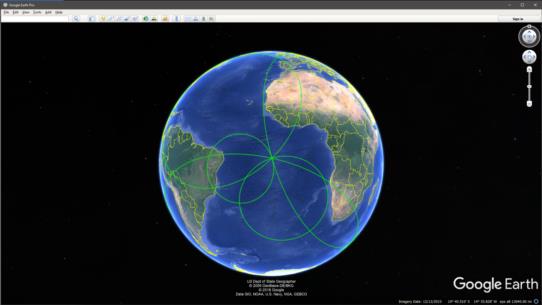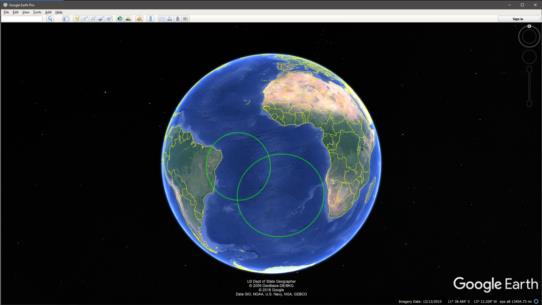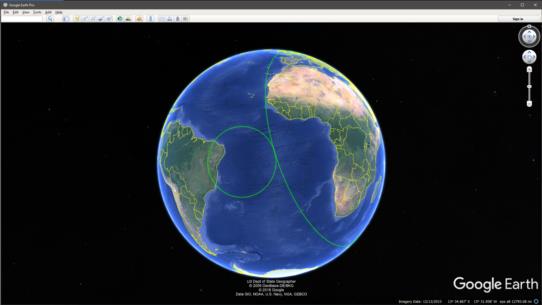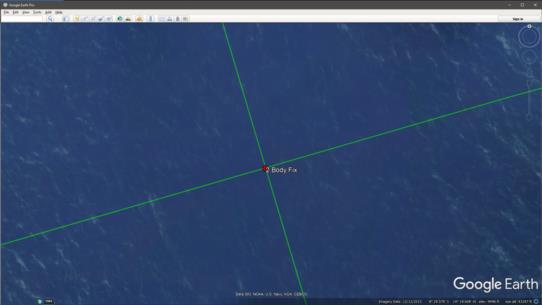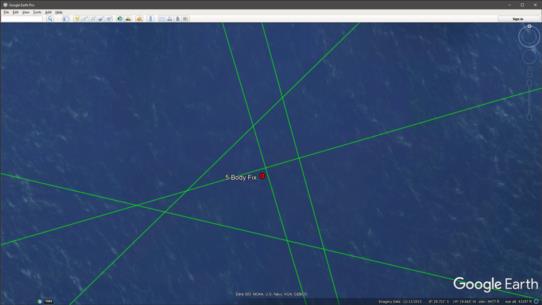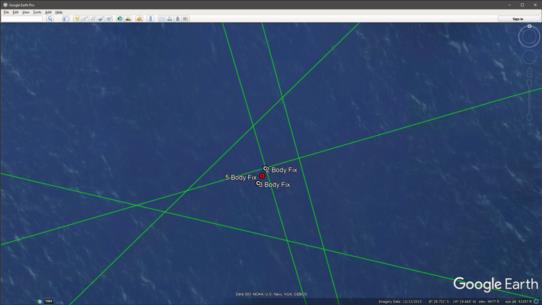
NavList:
A Community Devoted to the Preservation and Practice of Celestial Navigation and Other Methods of Traditional Wayfinding
From: Sean C
Date: 2018 Aug 24, 17:47 -0700
Frank wrote:
"In Ron's original setup, he asked which bodies would provide the "best" two-body fix and which would provide the "best" three-body fix. There are certain "standard operating procedures" answers to these questions, and there is also room for judgment. For a two-body fix, is there any circumstance where you woul choose Antares and Rigil Kentaurus (which are relatively close together in azimuth --usually a bad thing)?"
I used Andrés Ruiz's software to solve the problem by plotting COPs on Google Earth. (See "Image_1" below. KMZ also attached.) This has the advantage of not needing an AP at all. While thinking about Ron's questions, I too thought that there could be multiple answers to some of them.
For instance: let's say there was a large uncertainty in our position (a topic which has been discussed here before), and we only had time to shoot two bodies. Traditionally, we would pick the two whose azimuths are as close as possible to 90° apart. So, if we chose the Moon and Antares (Image_2), we would get a pair of COPs which cross at nearly right angles to each other - reducing uncertainty. ...Except that we also get a "good" fix at a second location about 1,400 NM away (Image_2a). Of course, there are other clues in this particular scenario which help us eliminate one of the two positions. But will that always be the case?
Suppose we instead did the opposite and chose the Moon and Altair, whose azimuths are 180° apart (Image_3). Now there is only one location at which the COPs cross (or at least come very close). If we place our fix at the point where the two COPs appear to be closest to each other, we might get a fix that is only about 15 NM from the one we would've gotten using Antares (Image_3a). And, of course, we could have chosen the combination of Antares and Altair and ended up with a fix that was just as good as with the Moon and Antares.
Next, we have the question about which bodies provide the best 3 body fix. Having all 5 sights, we can say with near certainty that Rigil Kent., Altair and Arcturus give us the best fix. But what if we had only managed to shoot the Moon, Rigil Kent., Altair and Arcturus (Image_4)? Again, since the Moon and Altair are 180° apart in azimuth, we would end up with two LOPs which are [nearly] parallel. That gives us two similar triangles - and some uncertainty. How much error is in each sight? The Altair sight would only need about 1.1' of error for the best fix to be Moon-Rigil Kent.-Arcturus (Image_4a). The end result is only a shift of the fix by about a third of a NM - ultimately insignificant - but I think that makes either combination a valid choice.
The last four images show where I chose to place each fix and their relation to each other. In these images I had the mouse directly over each fix, so the coordinates at the bottom of the screen are the locations of each, respectively. I placed them all by eye. IOW, I didn't use the NA formula as suggested. But, it has been my experience that eyeballing the best fix comes close enough to just about any other method - whether that is using a formula, an overlay to find the symmedian point or whatever.
Cheers, and thanks for the exercise, Ron!
-Sean C.
